Costco Pestel Analysis Overview
In the highly competitive wholesale industry, Costco has thrived as a dominant player worldwide. Its ability to navigate the complex external and internal forces that impact its strategies and success sets it apart.
At the heart of this strategic prowess lies the PESTEL analysis framework, a critical tool for companies and managers alike.
So, our team has recently conducted a PESTEL analysis to examine the impact of the macro-environment factors on Costco’s growth in the next years.
A PESTEL analysis is a strategic management framework used to examine the external macro-environmental factors that can impact an organization or industry.
The following is a detailed article on Costco’s PESTEL analysis. It discusses the political, economic, sociocultural, technological, environmental, and legal factors influencing its performance and profitability in the coming years.
Costco Overview
Costco Wholesale Corporation is an American multinational corporation that operates a membership-only warehouse club chain.
As of 2023, Costco operates 832 warehouses worldwide, including 550 in the United States, 108 in Canada, 95 in Mexico, 40 in the United Kingdom, 37 in Japan, 30 in Australia, 29 in Taiwan, 16 in South Korea, 14 in Spain, 11 in Iceland, and 2 in France.
History
Costco was founded in 1983 to merge two warehouse clubs, Price Club and San Diego-based FedMart. The company’s first warehouse was opened in Seattle in 1983.
Costco quickly became a significant player in the warehouse club industry, and by the early 1990s, it had expanded into Canada and Mexico.
In 1992, Costco opened its first warehouse in the United Kingdom. The company continued to expand rapidly in the 1990s, and by the end of the decade, it had opened warehouses in Japan, Australia, Taiwan, and South Korea.
In the 2000s, Costco continued to expand its global footprint, opening warehouses in Spain, Iceland, and France. The company also began experimenting with new formats, such as its Costco Business Centers, designed to serve small businesses.
Products
Costco is a membership-only warehouse club that sells a wide variety of products, including:
- Food and beverages
- Health and beauty products
- Household goods
- Apparel
- Electronics
- Furniture
- Patio and garden supplies
- Automobiles
- Travel
Achievements
Costco has been consistently recognized as one of the best companies to work for and one of the most admired companies in the world. The company has also received numerous awards for its customer service and its commitment to sustainability.
Main competitors
Costco’s main competitors in the United States and worldwide include:
- Sam’s Club: Owned by Walmart, Sam’s Club is another membership-only warehouse club with a business model similar to Costco’s. Sam’s Club focuses on providing low prices every day, while Costco emphasizes high-quality products at competitive prices.
- BJ’s Wholesale Club: BJ’s Wholesale Club is a smaller warehouse chain focusing on fresh food and prepared meals. The company also offers a variety of exclusive products and services, such as its in-store pharmacy and travel agency.
- Walmart: While not strictly a warehouse club, Walmart is a significant competitor to Costco in the broader retail market. Walmart’s advantage lies in its vast network of stores and its ability to offer lower prices on a broader range of products.
- Target: Target is another major competitor to Costco, particularly among middle-class shoppers. Target offers a more upscale atmosphere and a more comprehensive selection of non-grocery items than Costco or Walmart.
- Amazon: As e-commerce grows, Amazon has emerged as a significant competitor to Costco, particularly for online grocery shopping. Amazon Prime members enjoy free two-day shipping on many items, including groceries, which can be a compelling advantage for Costco customers.
These five competitors represent Costco’s primary challenges in the worldwide retail market. Costco’s ability to differentiate itself through its focus on high-quality products, excellent customer service, and strong brand reputation will be crucial in maintaining its competitive edge.
Suppliers
Costco has a large network of suppliers that provide the company with various products. The company’s largest suppliers include:
- Kraft Heinz
- PepsiCo
- Coca-Cola
- Procter & Gamble
- Unilever
Customers
Costco’s customers are individuals and businesses looking for high-quality products at low prices. The company also has a growing customer base among online shoppers.
Strategy
Costco’s strategy is to provide its members with high-quality products at low prices. The company also focuses on providing excellent customer service and maintaining a solid commitment to sustainability.
Business model
Costco’s business model is based on membership fees. The company charges its members an annual fee to access its warehouses. Costco also generates revenue from selling its products and other services, such as its gas stations and optical centers.
In recent years, Costco has been focusing on expanding its online business. The company has also invested in new technologies, such as self-checkout kiosks and mobile payments.
Costco is a successful company with a long history of innovation. The company is well-positioned for continued growth in the future.
Wholesale industry overview
Costco Wholesale Corporation operates in a highly competitive and dynamic wholesale market, constantly evolving due to technological advancements, globalization, and consumer trends.
The company faces intense competition from major players like Sam’s Club, BJ’s Wholesale Club, Walmart, and Target, all of which are vying for market share and customer loyalty.
Latest News
Costco has been focusing on expanding its online business in recent years, launching initiatives like Costco.com, Instacart delivery, and same-day delivery in select markets.
The company is also investing in new technologies, such as self-checkout kiosks, mobile payments, and advanced analytics tools, to enhance the customer experience and operational efficiency.
Competition Level
The wholesale market is highly fragmented, with numerous players of varying sizes and geographical reach. This intense competition drives innovation, efficiency, and price competitiveness as companies strive to offer compelling value propositions to their customers.
Costco’s differentiation lies in its focus on high-quality products, excellent customer service, and a strong brand reputation, which has helped it maintain a loyal customer base.
Customers’ Needs Evolution
Wholesale customers’ needs continuously evolve, influenced by changing consumer preferences, technological advancements, and economic trends. Key trends shaping customer needs include:
- Faster delivery times: Customers demand efficient and timely deliveries to meet their evolving needs.
- Personalized products and services: Customers seek personalized solutions tailored to their requirements.
- Sustainable products and practices: Customers are increasingly environmentally conscious and prioritize sustainability in their purchasing decisions.
Costco’s Response to Customers’ Needs
Costco is adapting to the changing customer landscape by:
- Expanding online presence: Costco is enhancing its e-commerce platform and delivery options to cater to customers’ digital preferences.
- Offering curated product selections: Costco is tailoring its product offerings to meet the specific needs of its target customers, including offering more organic and sustainable products.
- Investing in sustainability initiatives: Costco is committed to reducing its environmental impact and promoting sustainable practices.
Wholesale Market Outlook
The wholesale market is expected to experience steady growth in the coming years, driven by factors such as:
- Increasing consumer demand: Consumer spending is expected to rise, driving demand for wholesale products.
- Expanding e-commerce: E-commerce is transforming the wholesale industry, providing new growth opportunities.
- Globalization of supply chains: Global sourcing of goods is becoming more prevalent, offering wholesalers access to a broader range of products.
Costco can benefit from these growth trends by leveraging its strong brand reputation, loyal customer base, and commitment to innovation.
The company’s focus on high-quality products, excellent customer service, and sustainable practices will remain critical differentiators in the competitive wholesale market.
Political environment
The international political environment can significantly impact Costco’s growth and sustainability in the coming years.
Positive and negative factors could influence the company’s ability to expand into new markets, maintain its supply chain, and manage costs.
The intricate web of external factors impacting Costco’s operations encompasses several key areas.
First, international trade policies exert significant influence, with changes in tariffs or trade restrictions potentially escalating costs for Costco, impacting consumer prices or profitability due to its extensive global presence.
Simultaneously, regulatory landscapes covering retail, employment, health, and safety standards, from local to federal levels, directly shape Costco’s operational framework.
This includes minimum wage laws, work-hour regulations, and food safety standards, directly influencing Costco’s strategies and practices.
Secondly, political stability in nations where Costco operates is pivotal. Any political unrest or sudden shifts can disrupt supply chains, operational processes, or even demand patterns, posing substantial challenges to Costco’s seamless functioning.
Additionally, alterations in tax policies, be it corporate tax rates, sales taxes, or VAT in international markets, can impact Costco’s profitability and pricing strategies, demanding strategic adjustments in response to these fiscal changes.
Finally, the diplomatic landscape, intertwined with foreign relations, plays a critical role for Costco, given its global sourcing.
Changes or tensions in relations between the U.S. (Costco’s headquarters) and other nations can significantly alter sourcing strategies, potentially leading to increased costs or disruptions in the supply chain.
Moreover, political decisions around consumer protection laws and infrastructure development significantly shape Costco’s operations, influencing product quality, returns, logistics, and distribution efficiency, ultimately impacting the company’s bottom line.
Economic sanctions against specific countries can also limit Costco’s expansion or sourcing capabilities, further complicating its global operations.
To sum up, here are the main positive and negative influences of the political environment on Costco’s growth:
Positive Impacts
- Increased trade liberalization: Reductions in trade barriers and tariffs can make it easier for Costco to import goods worldwide, potentially lowering costs and expanding product selection.
- Political stability: Stable political environments can create a more favorable climate for investment and business expansion, benefiting Costco’s international growth plans. All the foreign countries (Canada, Mexico, Australia, South Corea, etc) in which Costco operates are characterized by high political stability.
Negative Impacts
- Trade protectionism: Increases in trade barriers and tariffs can make it more expensive for Costco to import goods, potentially raising prices and reducing profitability.
- Political unrest or conflicts: Political instability in critical markets can disrupt supply chains, increase transportation costs, and deter investment, hindering Costco’s operations and growth potential.
Overall, the international political environment presents opportunities and challenges for Costco’s growth and sustainability in the coming years.
The company must carefully navigate these factors to maintain its competitive edge and expand its global presence.
Economic environment
The international economic environment can have a significant impact on Costco’s growth worldwide in the coming years. Here’s how some key factors could influence the company’s performance:
Rising unemployment: If unemployment rates increase significantly in major markets, consumers may have less disposable income to spend on Costco’s products, potentially slowing down sales growth and conversely.
High inflation: Persistent inflation can erode consumer purchasing power, potentially reducing demand for Costco’s products if consumers prioritize spending on essential goods. Costco has historically been able to manage inflation by negotiating with suppliers and maintaining tight control over its operating costs.
Fluctuating exchange rates: Fluctuations in exchange rates can affect Costco’s costs and profitability, particularly when importing goods from various countries.
Economic growth: Global economic growth can increase demand for Costco’s products and services. For example, the global economic recovery from the COVID-19 pandemic led to increased growth in Costco subscriptions.
Overall, Costco’s growth trajectory in the coming years will depend on its ability to navigate the complex international economic environment and adapt to changing consumer behaviors.
The company’s strong financial position, diverse product offerings, and loyal customer base will be crucial assets in navigating these challenges and maintaining its competitive edge.
Social environment
International social and cultural factors can seriously impact Costco’s growth and development in the forthcoming years. Here are some key elements that could positively or negatively influence the company’s global success:
Positive Impacts:
- Growing middle class: The expansion of the middle class in emerging markets presents a vast opportunity for Costco to tap into a growing consumer base with increasing disposable income.
- Rising consumerism: The global trend towards consumerism and a focus on material possessions creates a demand for Costco’s wide range of products, potentially driving sales growth.
- Changing consumer preferences: Shifting consumer preferences towards value, quality, and convenience aligns with Costco’s business model, potentially attracting new customers and expanding its market share.
Negative Impacts:
- Cultural differences: Entering new markets with diverse cultural norms and consumer preferences requires careful adaptation of Costco’s product offerings, marketing strategies, and operational practices to ensure cultural sensitivity and relevance.
- Changing consumer attitudes towards sustainability: Increasing consumer awareness and concern about environmental impact and sustainability practices may challenge Costco to adapt its sourcing, packaging, and operations to meet evolving consumer expectations.
- Evolving retail landscape: The rapid growth of e-commerce and online shopping could disrupt traditional brick-and-mortar retail, requiring Costco to invest in its digital presence and omnichannel strategies to maintain market share.
To take advantage of these opportunities and mitigate these threats, Costco has taken several relevant measures in recent years:
- Costco has successfully expanded into various international markets (France, Island) by adapting its product offerings to local preferences, such as offering halal and kosher products in certain regions.
- The company has also committed to sustainability initiatives, such as reducing packaging waste and increasing renewable energy sources.
- Costco is actively investing in its e-commerce platform and omnichannel strategies, offering convenient online shopping options and integrating its online and physical store experiences.
Costco’s ability to navigate the complex international social and cultural environment will be crucial for its continued growth and expansion.
The company’s sensitivity to local customs, responsiveness to evolving consumer preferences, and adaptability to changing retail trends will be key differentiators in the global marketplace.
Technological environment
Technological advancements are rapidly transforming the wholesale landscape, and Costco is well-positioned to leverage these innovations to enhance its operations, expand its customer base, and maintain its competitive edge.
Here are some vital technological factors that could affect Costco’s activities today and in the coming years:
Artificial Intelligence (AI) and Machine Learning (ML):
- AI and ML can be used to optimize supply chain management, predictive analytics for inventory forecasting, and personalized product recommendations to enhance the customer experience.
- Costco is already using AI to optimize its pricing strategies and identify customer trends, and it is likely to expand its use of these technologies.
E-commerce and Omnichannel Strategies:
- The rise of e-commerce and the increasing demand for convenient online shopping options require Costco to invest in its e-commerce platform, mobile app, and omnichannel strategies.
- Costco is expanding its online grocery delivery options, offering same-day delivery in select markets, and integrating its online and physical store experiences to provide a seamless shopping experience.
Self-checkout Kiosks and Mobile Payments:
- Self-checkout kiosks can reduce checkout times, improve customer satisfaction, and lower labor costs.
- Mobile payments offer convenience and security to customers, and Costco is likely to expand its adoption of mobile payment options.
Warehouse Automation and Robotics:
- Automation and robotics can improve warehouse efficiency, reduce errors, and enhance safety.
- Costco invests in warehouse automation technologies, such as robotic picking and packing systems, to streamline operations and improve customer service.
Supply Chain Transparency and Traceability:
- Consumers are increasingly demanding transparency and traceability in their food supply chains.
- Costco can leverage blockchain technology to provide customers with detailed information about the origin and production of their products, enhancing brand trust and loyalty.
Examples of Costco’s Technological Adjustments:
- Costco has implemented self-checkout kiosks in most warehouses, reducing checkout times and improving customer satisfaction.
- The company is expanding its online grocery delivery options, offering same-day delivery in select markets, and integrating its online and physical store experiences to provide a seamless shopping experience.
- Costco invests in warehouse automation technologies, such as robotic picking and packing systems, to streamline operations and improve customer service.
Overall, Costco’s embrace of technological advancements will be crucial in maintaining its competitive edge, enhancing the customer experience, and adapting to the evolving retail landscape.
The company’s strategic investments in AI, e-commerce, automation, and supply chain transparency are positioning it well for continued growth and success in the years to come.
Ecological environment
Ecological factors are becoming increasingly significant in today’s business landscape, and Costco is facing some challenges and opportunities related to environmental sustainability.
Here are some critical ecological factors that could impact the growth of Costco today and in the coming years:
Climate Change: Climate change is disrupting agriculture and food production, potentially affecting the availability and cost of products Costco sources.
Resource Scarcity: The increasing scarcity of resources such as water and energy could pose challenges for Costco’s operations and supply chain.
Consumer Environmentalism: Growing consumer awareness and concern about environmental impact drive demand for sustainable products and practices. Costco is responding to these trends by increasing its organic and sustainable product offerings, reducing packaging waste, and adopting eco-friendly practices.
Regulatory Landscape: Governments worldwide are enacting stricter environmental regulations, which could impact Costco’s operations and product offerings.
Overall, Costco’s commitment to environmental sustainability and its ability to adapt to changing ecological factors will be crucial for its continued growth and success in the years to come.
The company’s proactive approach to resource conservation, sustainable sourcing, and emissions reduction will help it maintain its reputation as a responsible and environmentally conscious business leader.
Legal environment
The international legal environment plays a significant role in shaping the growth and expansion of Costco in the coming years.
Both favorable and unfavorable legal developments can influence the company’s ability to enter new markets, protect its intellectual property, and operate efficiently.
Positive Impacts of the International Legal Environment:
- Trade agreements and treaties: Trade agreements and treaties can reduce trade barriers, tariffs, and other restrictions, making it easier and more cost-effective for Costco to import goods worldwide, potentially expanding its product selection and lowering prices.
- Intellectual property protection: Strong intellectual property laws can safeguard Costco’s trademarks, patents, and copyrights, preventing unauthorized use of its brand and products and protecting its competitive advantage.
- Investment protection agreements: Investment protection agreements can provide Costco with legal recourse and compensation in case of expropriation or other government actions that harm its investments in foreign countries.
Negative Impacts of the International Legal Environment:
- Non-tariff barriers: Non-tariff barriers, such as technical regulations, sanitary and phytosanitary measures, and local content requirements, can increase costs and complexity for Costco to enter new markets, potentially hindering its expansion plans.
- Antitrust laws: Costco’s dominant market position in certain regions may attract scrutiny from antitrust regulators, potentially leading to investigations, fines, or restrictions on its business practices.
- Foreign bribery laws: Costco’s operations in foreign countries may be scrutinized under the Foreign Corrupt Practices Act (FCPA) and other anti-bribery laws, requiring strict compliance measures to avoid legal liability.
Overall, the international legal environment presents opportunities and challenges for Costco’s growth and expansion.
The company’s ability to navigate complex legal frameworks, protect its intellectual property, and comply with regulatory requirements will be crucial for its success in the global marketplace.
Costco Pestel Analysis Summary
To summarize the results of the Costco Pestel analysis, we present the significant opportunities and threats related to the macro environment of this company.
The table below summarizes the various opportunities and threats that Costco faces across different components of the PESTEL analysis. It provides a concise overview of the external factors that can influence Costco’s business environment.
Here is a summary table of Costco PESTEL analysis based on the results above:
| Components | Opportunities | Threats |
| Political Factors | *Increased trade liberalization and stable political environments. | *Political tensions between the U.S.A and other countries could affect demand; *Trade restrictions increasing operating costs; *Trade protectionism, Political unrest or conflicts. |
| Economic Factors | *Global economic growth; *Rising disposable incomes driving demand. | *Rising unemployment, High inflation, and Fluctuating exchange rates; *Economic recession after the COVID-19 crisis reducing subscription growth. |
| Sociocultural Factors | *Growing middle class; *Shifting consumer preferences. | *Rise of nationalism impacting foreign products and services. |
| Technological Factors | *Disruption due to evolving tech and resource demands. | *Disruption due to evolving tech, Resource demands. |
| Environmental Factors | *Consumer demand for sustainable products, Regulatory trends. | *Climate change effects, resource scarcity, and stringent regulations. |
| Legal Factors | *Free trade agreements facilitating global expansion; *Strict regulations in some countries. | *Non-tariff barriers, Antitrust laws, Foreign bribery laws. |
Conclusion
In navigating the complex global landscape, Costco faces diverse opportunities and challenges across the political, economic, socio-cultural, technological, ecological, and legal spheres.
The company stands poised to capitalize on increased trade liberalization, stable political climates, and growing middle-class segments, leveraging these facets to bolster its international expansion and market presence.
Yet, the looming threats of trade protectionism, political instability, shifting consumer preferences, and stringent regulatory frameworks demand astute navigation and proactive adaptation strategies.
Costco’s resilience lies in its adeptness to innovate and evolve amidst dynamic economic climates, harnessing technological advancements like AI, e-commerce expansion, and sustainable practices to sustain growth.
However, the company must remain vigilant against rising unemployment, inflationary pressures, and the evolving retail landscape.
By balancing these dichotomies and embracing a forward-thinking approach, Costco can fortify its competitive position, establishing itself as a responsible global entity responsive to changing market dynamics while sustaining its growth trajectory in the years ahead.
PESTEL analysis examples 2024
To better understand the PESTEL analysis, we invite you to read our recent free examples of the Pestel framework.
PESTEL analysis of Primark
Click here to read our example of Primark’s PESTEL analysis.
PESTEL analysis of Zara
Click here to read our example of Zara’s PESTEL analysis.
PESTEL analysis of DHL
Click here to read our example of DHL’s PESTEL analysis.
PESTEL analysis of FedEx
Click here to read our example of FedEx’s PESTEL analysis.
PESTEL analysis of Chipotle
Click here to read our example of Chipotle’s PESTEL analysis.
PESTEL analysis of Brazil
Click here to read our example of Pestel’s analysis of Brazil.
PESTEL analysis of Spotify
Click here to read our example of Spotify Pestel analysis.
Chick-fil-A PESTEL Analysis
Click here to read our example of Chick-fil-A Pestel analysis.
Microsoft PESTEL Analysis
Click here to read our example of Microsoft Pestel analysis.
Disney PESTEL Analysis
Click here to read our example of Disney Pestel analysis.
Airline Industry PESTEL Analysis
Click here to read our example of the Airline industry Pestel analysis.
Walmart Pestel Analysis
Click here to read our example of Walmart Pestel analysis.
Amazon Pestel Analysis
Click here to read our example of Amazon Pestel analysis.
McDonald’s Pestel Analysis
Click here to read our example of the Netflix Pestel analysis.
Netflix Pestel Analysis
Click here to read our example of the Netflix Pestel analysis.
Apple Pestel Analysis
Click here to read our example of the Apple Pestel analysis.
Twitter Pestel Analysis
Click here to read our example of the Twitter Pestel analysis.
Facebook Pestel Analysis
Click here to read our example of the Facebook Pestel analysis.
Pestel analysis of the Social Media industry
Click here to read our example of the Pestel analysis of the Social Media industry.
Ikea Pestel Analysis
Click here to read our example of the IKEA Pestel analysis.
Tesla Pestel Analysis
Click here to read our example of the TESLA Pestel analysis.


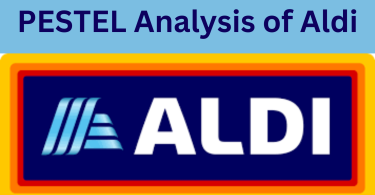
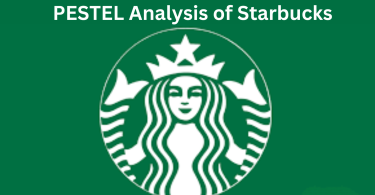

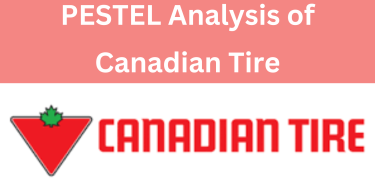
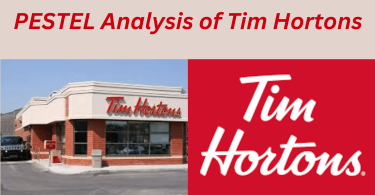


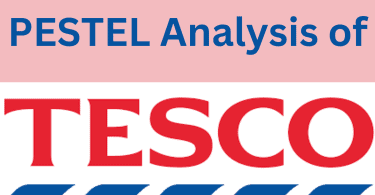
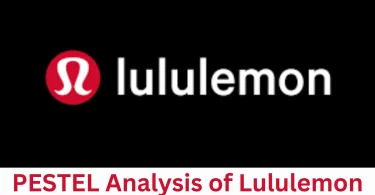
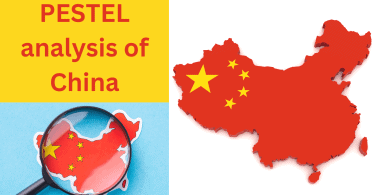
Leave a Comment